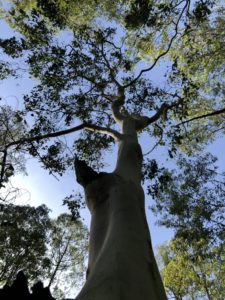Dear Integral Meditators,
How do you think of time? It is one of three major aspects of our experience (the other two being space and energy). Often as not we think of time as being just one thing, but in reality it is much more than that. In the article below I outline four major aspects of time and give a few thoughts about them within the context of how we can learn to rest in the eternal present.
Yours in the spirit of timeless time,
Toby

Article of the Week:
The Eternal Present and the Four Types of Time
The eternal present is the spiritual dimension of time, awareness and realization of which is a major goal within all of the great wisdom traditions of the world. The paradoxical thing about the eternal present is that it is always present with us, so it is not something that you can “achieve” as such. Rather it is more like something that you can become aware of and use that awareness to inform your day to day existence.
From a meditative perspective, the way to meditate upon the eternal present is to recognize it and then rest your awareness in it for extended periods. This gives you a basic platform for starting to integrate the eternal present into your daily life. However in the long term your ability to integrate the eternal present into your daily life will also depend upon the relationship that you have to three aspects of “temporal time” that we also have to deal with. These three I call clock time, biological time and psychological time. What I intend to do in the rest of this article is to outline these different types of time and indicate few simple things that we need to master with each one if we really want to integrate the eternal present into our life.
- Clock Time– We all know this one, it is the division of our time into seconds, minutes, days, weeks, months and years. From a meditational perspective we need to be well organized enough with regard to our clock time to integrate regular periods of meditative activity into our day, where we can rest in the eternal present. Without this organizational ability we find ourself continually chasing after clock time, feeling flustered and disorganized.
- Biological/Seasonal Time– This is the time that our body is attuned to, and that reflects the wider cycles of time and the seasons on the planet. Animals have attunement to this form of time naturally, and act accordingly and appropriately. However we humans often as not seem to find ourself out of touch with our “biological clock”, mentally overriding it, not listening to our physical body when it needs some down time, and being totally unaware of the natural cycles occurring on our immediate environment. Mastery of biological time essentially means re-allowing our biological and seasonal intelligence to communicate with us and factor consideration of it into our daily activities. You could also call biological time “cyclical time”, as it moves in cycles and circles, rather than in a linear way.
- Psychological time– Psychological time is the time that we experience in our mind. You could also call this linear time in the sense that psychological time feels like it is moving from one point to the next, to the next, to the next in a straight line (unlike the cycles/circles of biological time). However psychological time can be fickle in the sense that sometimes a short amount of clock time can feel like an eternity, and a long period of time can feel very short, for example if we are really enjoying ourselves. Psychological time is extremely subjective, with periods of time in our day and life that we “dread” and periods that we look forward to. Psychological time is also interesting in the sense that for example if we look back upon our days activities there may be just one thing that our mind focuses on, as if it was the only thing that happened in the day. The essential point is that our experience of psychological time is defined most often by the way in which we frame our experience with our thoughts, so taking care of our thoughts, and making sure that we are mentally framing our daily experience in as optimal a way as possible is a major aspect of mastering psychological time.
- Spiritual time– Spiritual time is the time beyond both cyclical biological time and linear psychological time, and is most often referred to as the eternal present, or the eternal now. It embraces and contains all the other expressions of time like a mother embracing a child. As mentioned at the beginning of this article, awareness and realization of it is a major goal of all the world’s great wisdom traditions. Quite often when people first hear about the eternal present they think of it as a high realization that is far away from where they are in their own path right now. However in reality the eternal present is in many ways the simplest and most accessible of experiences. In order to access it you simply have to “drop time” and allow your mind to rest in a natural, non-conceptual state. As soon as you do this you immediately begin to enter into the subjective experience of the eternal present moment. As such we can turn to the eternal present for support whether we are a very highly realized spiritual being, or a relative beginner.
In order to begin leveraging on the support and happiness that we can receive from spiritual time/ the eternal present the major thing that we need to do is to simply create time for a little stillness in our routine, and then recognize the eternal present within that quiet space, allowing our mind ad body to rest in the experience as fully as possible!
For other articles by Toby on the eternal present, please read “The Four Types of Present Moment”, and “Your Ego as Resistance to What is Present”.
© Toby Ouvry 2011, you are welcome to use or share this article, but please cite Toby as the source and include reference to his website www.tobyouvry.com

 Article of the Week:
Article of the Week: Article of the Week:
Article of the Week:



 Article of the Week:
Article of the Week: